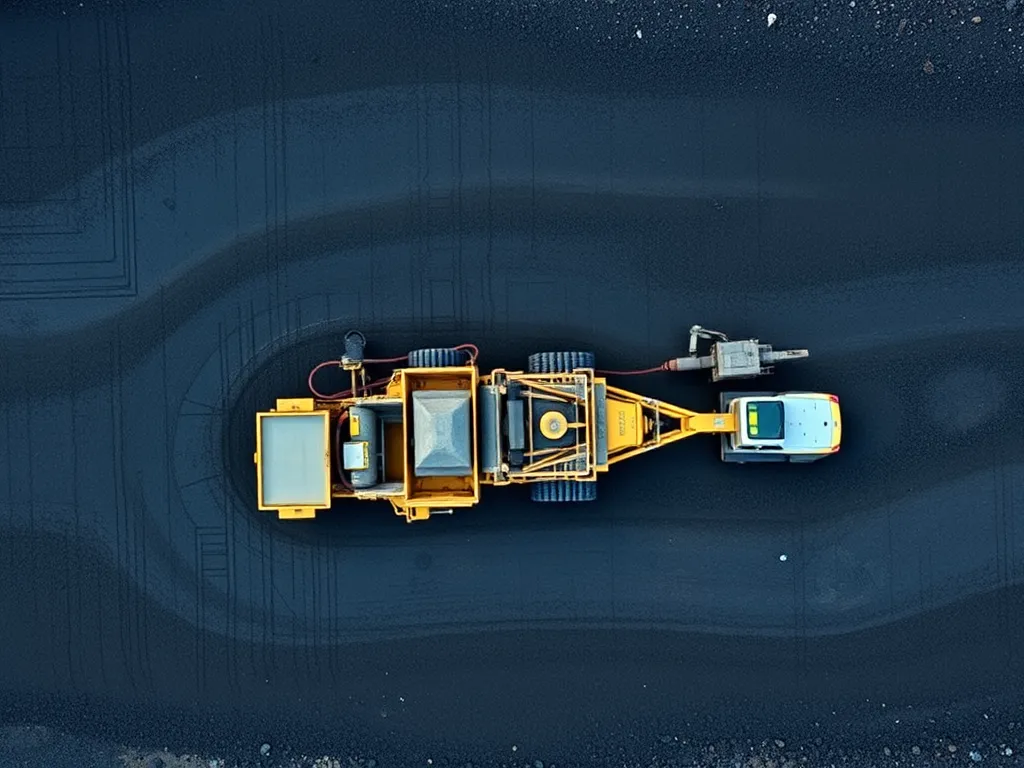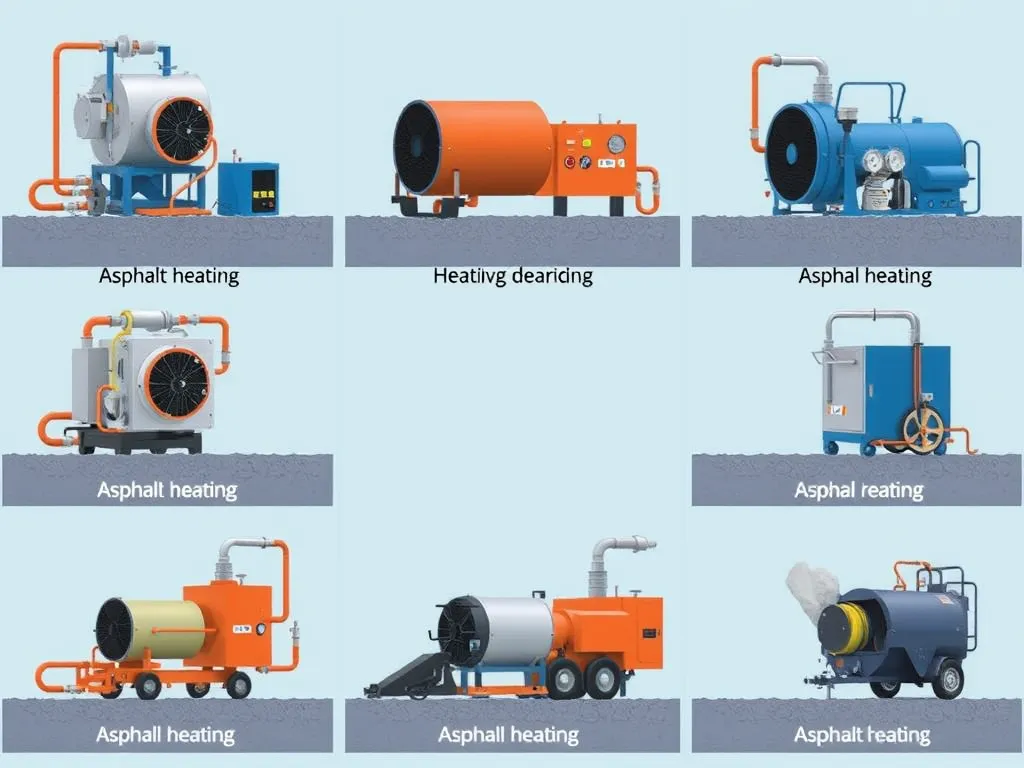Cooling Vs Curing in Asphalt: Key Differences and Processes
Published on: April 17, 2025 | Last Updated: April 14, 2025
Written By: George Voss
Cooling and curing are two distinct processes that determine asphalt’s durability and performance. Cooling refers to the physical temperature drop after asphalt is laid, allowing it to harden enough for initial use. Curing involves chemical changes where the binder (bitumen) oxidizes and bonds with aggregates, developing long-term strength. While cooling can take hours, curing continues for weeks. Both processes depend on temperature, weather, and material composition, directly impacting pavement lifespan.
This article breaks down the science behind cooling and curing in asphalt. Learn how temperature fluctuations affect hardening rates, why proper compaction prevents cracks, and which techniques accelerate curing without compromising strength. We’ll compare weather impacts in hot versus cold climates, analyze common installation errors, and provide data-driven solutions for maximizing pavement life. From thermal gradient management to curing timeframes, get actionable insights for residential driveways and commercial projects.
Contents
- Understanding Asphalt Curing
- Understanding Asphalt Cooling
- Key Differences Between Cooling and Curing
- Factors Influencing Cooling and Curing
- Techniques to Optimize Asphalt Curing
- Techniques to Manage Asphalt Cooling
- Consequences Of Improper Cooling and Curing
- Environmental Considerations
- FAQs on Cooling Vs Curing in Asphalt
- Closing Thoughts
- Additional Resources for You:
Understanding Asphalt Curing
Curing transforms liquid asphalt into a solid, load-bearing surface through chemical hardening. This process stabilizes roads, driveways, and parking lots, allowing pavements to withstand traffic and weather.
Definition Of Asphalt Curing
Asphalt curing involves oxidation and volatilization of binders (like PG 64-22 or PG 76-16) within the mix. Volatilization releases light oils, while oxidation strengthens bonds between bitumen and aggregates. This dual action hardens pavement, increasing stability by up to 95% within 72 hours under optimal conditions.
Chemical and Physical Changes During Curing
Bitumen viscosity rises from 3,000 Poise at 250°F to over 50,000 Poise as temperatures drop below 100°F. Aggregates lock into place as binders lose volatile compounds. Physical shifts include surface hardening (12-24 hours) and full-depth structural bonding (7-30 days).
| Time | Change | Result |
|---|---|---|
| 0-6 hours | Surface volatilization | Traffic-resistant crust |
| 6-72 hours | Binder oxidation | 80% strength gain |
| 72+ hours | Full cross-linking | Maximum aggregate adhesion |
Ideal Temperature for Asphalt Curing
Maintain 70°F to 85°F for optimal curing. Below 50°F, oxidation slows, delaying strength gains. Above 95°F, rapid volatilization causes surface cracks. Nightly drops under 40°F halt chemical activity, risking incomplete bonds. Thermal profiling shows 55°F as the critical threshold for continuous curing.
Cooling influences curing speed but doesn’t drive chemical changes. Next, analyzing how heat dissipation shapes pavement readiness reveals why timing matters for lasting results.
Understanding Asphalt Cooling
Asphalt cooling refers to the physical process where freshly laid pavement loses heat after compaction. Unlike curing, which involves chemical bonding, cooling focuses solely on temperature reduction to stabilize the material. This phase determines when traffic can safely resume without damaging the surface.
Definition Of Asphalt Cooling
Asphalt cooling occurs as heat transfers from the hot mix (typically 275-325°F) to the surrounding environment. It’s a thermal process, not a chemical one. Proper cooling prevents deformation under load, ensuring the pavement retains its shape. Rapid cooling can lock in structural flaws, while delayed cooling risks rutting from premature traffic exposure.
Heat Dissipation and Temperature Reduction
Heat escapes asphalt through three mechanisms: conduction (into underlying layers), convection (via air/wind), and radiation. Thermal gradients develop, with surface layers cooling faster than deeper ones. A 2-inch overlay drops to 140°F in 30-60 minutes under 70°F ambient conditions. PG (Performance Grade) binders influence cooling rates—stiffer grades like PG 76-22 retain heat longer than PG 64-16.
Impact Of Ambient Conditions on Cooling
Wind speeds above 10 mph can slash cooling times by 40%, while shade or cloud cover reduces radiant heat loss. In 90°F weather, asphalt may stay workable for 20% longer versus 50°F days. Rain poses risks: a sudden downpour can trigger thermal shock, causing surface cracks as temperatures plunge 150°F in minutes. Contractors monitor dew points—high humidity slows evaporation, extending cooling phases.
Mastering cooling dynamics is half the battle. Next, we’ll contrast how curing chemically transforms asphalt long after the pavement feels cool to the touch.

Key Differences Between Cooling and Curing
Cooling and curing work together but serve distinct purposes in asphalt pavement development. Knowing how these processes differ ensures proper project execution and long-term surface performance.
Cooling Vs Curing: Sequential Processes
Cooling starts immediately after asphalt placement. This physical process lowers mix temperature from 275-350°F to ambient levels. Curing follows once the material cools below 175°F, triggering chemical changes as the binder (bitumen) oxidizes and bonds stabilize. While cooling happens rapidly, curing progresses over weeks.
Role Of Temperature in Each Process
Cooling relies on external factors: air temperature, wind speed, and base layer conductivity. For example, a 2-inch overlay cools 50% faster at 60°F versus 90°F. Curing demands controlled thermal conditions. Optimal binder hardening occurs between 70-80°F. Below 50°F, curing slows drastically, risking surface defects like raveling.
Timeframes for Cooling Vs Curing Completion
A 3-inch asphalt layer typically cools to 140°F within 2-4 hours. Full curing requires 6-12 months as molecular bonds mature. Traffic can resume after 72 hours post-cooling, but heavy loads should wait until 85% cure strength (3-6 weeks). Thinner layers (1.5 inches) cool faster (1-2 hours) but cure at similar rates.
Weather patterns and mix design significantly affect both processes. Next, let’s explore how to manage these variables for optimal results.
Also See: How Asphalt and Wildlife Conservation Can Coexist
Factors Influencing Cooling and Curing
Multiple elements shape how asphalt cools and cures. Temperature shifts, material choices, and construction methods all affect the final pavement quality.
Weather Conditions (Hot Vs Cold Climates)
Ambient weather dictates asphalt behavior. Hot climates (above 90°F) speed up cooling but risk rapid binder evaporation, leading to surface cracks. Cold environments (below 50°F) slow curing, extending project timelines. For proper curing, asphalt needs temperatures above 50°F for 24-72 hours. Freezing conditions halt chemical bonding, creating weak spots. In arid zones, midday sun can overheat fresh asphalt, requiring misting to balance heat retention.
Asphalt Mix Composition and Thickness
Mix design directly impacts thermal dynamics. PG 64-22 binders (common in moderate climates) cure slower than polymer-modified PG 76-22 grades. Larger aggregates retain heat longer, while thin layers (1-2 inches) cool 30% faster than 3-inch lifts. Thicker placements stay above 275°F longer, aiding binder activation but needing extended curing. Open-graded mixes cool quicker than dense-graded ones due to air voids. Costs rise with thickness—each extra inch adds $2.50-$4 per square foot—but durability improves.
Application Techniques and Compaction Quality
Proper compaction ensures uniform cooling and curing. Vibratory rollers achieve 92-95% density, reducing air pockets that trap heat. Poorly compacted areas cool unevenly, forming cracks or raveling. Paver speed matters: laying asphalt faster than 25 feet per minute risks temperature segregation. Tack coat application (0.05-0.15 gallons per square yard) improves layer adhesion during curing. Delayed rolling after mix drops below 185°F weakens bonds, cutting pavement life by up to 40%.
Mastering these factors sets the stage for optimizing asphalt performance. Next, let’s explore methods to enhance curing results under challenging conditions.
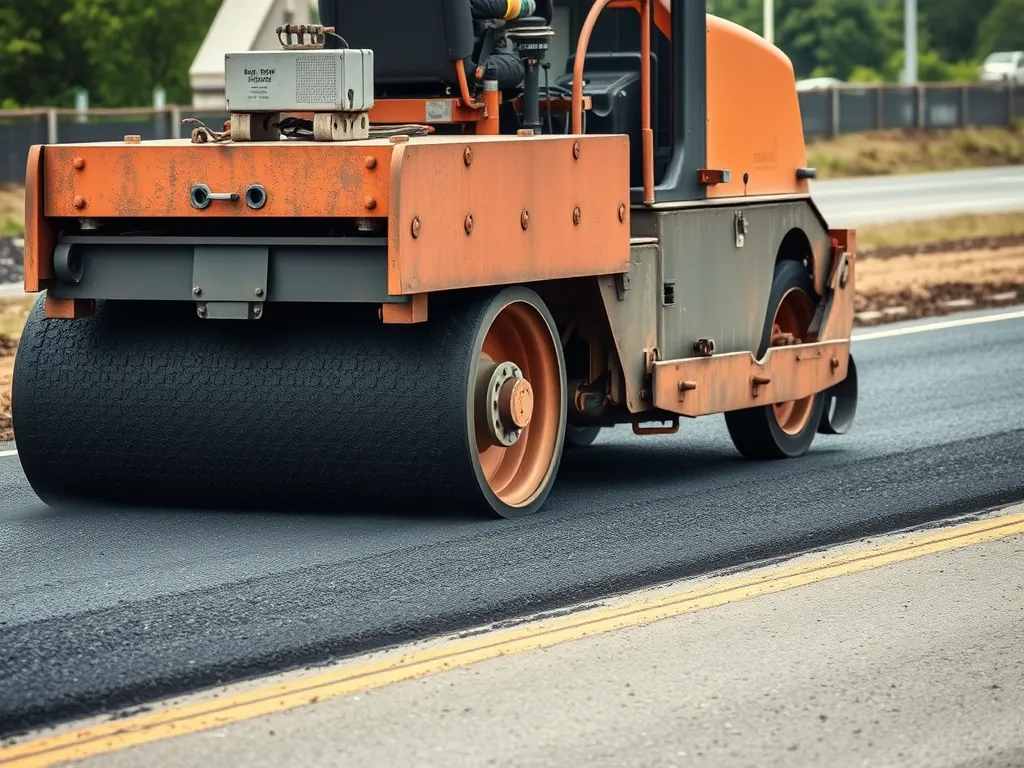
Techniques to Optimize Asphalt Curing
Proper asphalt curing requires precise control over temperature, moisture, and environmental factors. These methods ensure binder molecules bond fully with aggregates while avoiding premature hardening.
Maintaining Optimal Temperature During Application
Mix temperatures between 275°F and 325°F allow even binder distribution. Infrared thermometers track surface heat, while thermal blankets retain warmth in cold weather. For hot climates, apply emulsified asphalts with PG 64-22 binders rated for high-temperature performance. Rapid temperature drops below 50°F delay curing by 40-60%.
Controlled Water Application Methods
Moisture management prevents surface drying without over-saturating the base layer:
- Use fog sprays every 2-3 hours in temperatures above 85°F
- Limit water to 0.1-0.3 gallons per square yard
- Schedule watering during low-wind periods
Excess water weakens aggregate bonds, creating raveling or potholes.
Reducing Environmental Exposure (Wind/rain)
Wind speeds above 15 mph accelerate moisture loss. Deploy temporary windbreaks or apply curing compounds like paraffin-based emulsions. For rain protection, use polyethylene sheets (6 mil thickness) within 8 hours of paving. Monitor weather forecasts to avoid laying asphalt when storms are predicted within 48 hours.
Mastering these techniques sets the stage for effective cooling management. Next, explore how to balance heat retention with controlled temperature drops after curing.
Techniques to Manage Asphalt Cooling
Proper cooling control ensures long-term strength in asphalt pavements. These methods target heat loss rates while preventing cracks or weak spots linked to uneven cooling vs curing in asphalt.
Monitoring Thermal Gradients
Thermal gradients track temperature shifts between asphalt layers. Infrared cameras or probes map hot zones (300-350°F) and cold spots. Crews use this data to spot areas cooling too fast. Rapid drops below 175°F risk surface cracks before full curing ends.
Adjusting Layering Thickness for Heat Retention
Thicker lifts (2-4 inches) hold heat longer than thin layers. This slows cooling, letting binder-aggregate bonds set fully. In cold climates, crews add 0.5-1 inch per layer to offset frost risks. Hot regions use thinner lifts (1.5-3 inches) to speed safe walk-on temps under 120°F.
Post-application Cooling Rate Control
Misting sprays lower surface temps by 15-20°F in dry heat. Windbreaks (fabric sheets or barriers) cut cooling rates by 30% on breezy days. Night paving in summer extends workable cooling windows. Sensors alert crews if temps dip below 90°F before curing hits 70% hardness.
These steps set the stage for durable roads—but skip them, and flaws emerge fast. Up next: how poor cooling and curing lead to cracks, potholes, and costly fixes.
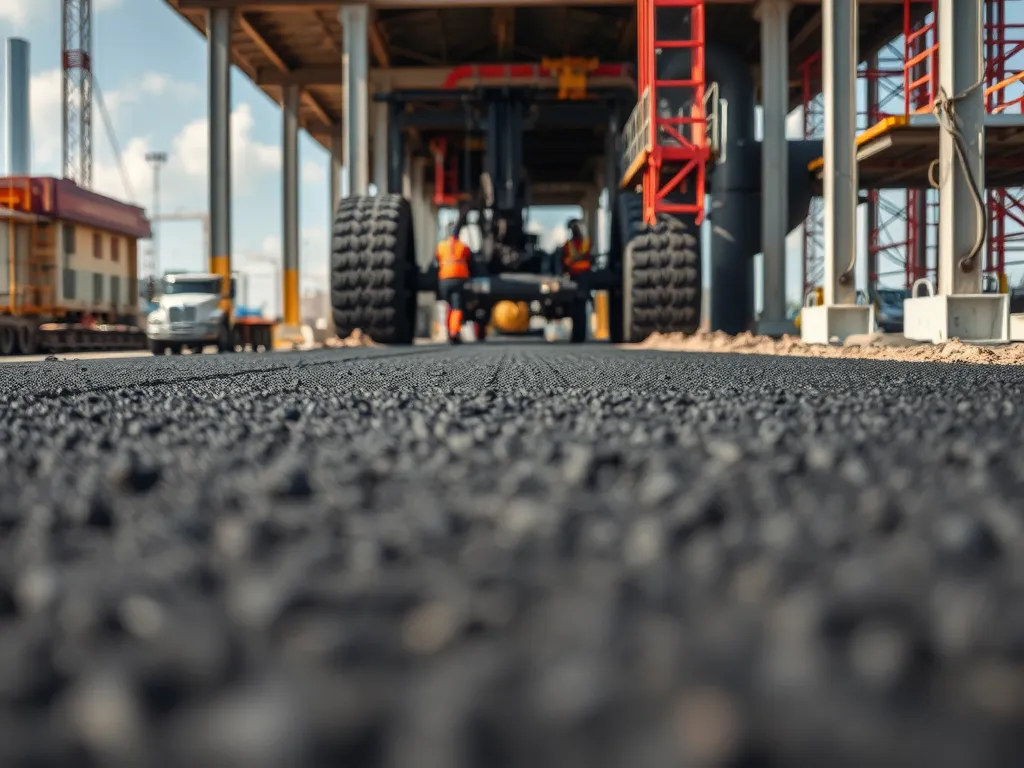
Consequences Of Improper Cooling and Curing
Failing to control asphalt cooling or curing phases causes structural flaws. These flaws cut pavement lifespan by 30-50% in many cases. Spotting warning signs early stops costly repairs.
Brittleness and Surface Cracking
Rapid cooling locks asphalt’s bitumen binder in a rigid state. This creates thermal stress as layers contract at varying rates. A 20°F drop within 60 minutes may trigger hairline cracks that widen under traffic loads. PG 64-22 binders show cracking at 40% higher rates when cooled too fast.
Reduced Adhesion and Premature Debonding
Incomplete curing leaves binders with low viscosity. Aggregates can’t form strong bonds, dropping shear strength by 15-25 psi. Debonding starts when vehicles apply lateral forces, stripping surface layers. Winter projects face 3x more debonding if curing stops at 50°F instead of optimal 70°F.
Segregation Of Binder and Aggregates
Slow cooling in thick lifts lets heavy aggregates sink while bitumen rises. This creates weak zones with 12-18% air voids – double ideal levels. Segregated pavements fail rut tests at 0.3” depth vs 0.15” in stable mixes. Nighttime cooling below 55°F worsens separation in 4”+ layers.
Managing thermal shifts and curing timelines directly impacts pavement longevity. Up next: how climate shifts and sustainability goals shape cooling/curing strategies.
Environmental Considerations
Both cooling and curing shape asphalt’s eco-footprint. Choices in methods and timing affect energy use, emissions, and project costs.
Energy Efficiency in Cooling/curing Processes
Cooling asphalt needs no added energy—it relies on air temp and heat loss. Curing demands more. Warm-mix asphalt (WMA), made at 250°F instead of 300°F, cuts fuel use by 20%. Infrared heaters for curing trim CO2 by 15% vs diesel burners. Using 30% recycled asphalt pavement (RAP) slashes binder needs, saving 300 kWh per ton.
Impact Of Weather Extremes on Project Timelines
Heat waves above 90°F speed cooling but risk cracks if trucks can’t pour fast. Teams may work at night. Cold snaps below 50°F stall curing. Each 10°F drop adds 2 days. In sub-40°F zones, heated rigs and thermal blankets hike costs by $15 per sq yd. Phoenix jobs might pause for 3 days in summer peaks. Minnesota jobs could stretch 25% longer in winter.
Weather shifts and energy choices set the pace for roads. Next, we explore what breaks when cooling and curing go wrong.
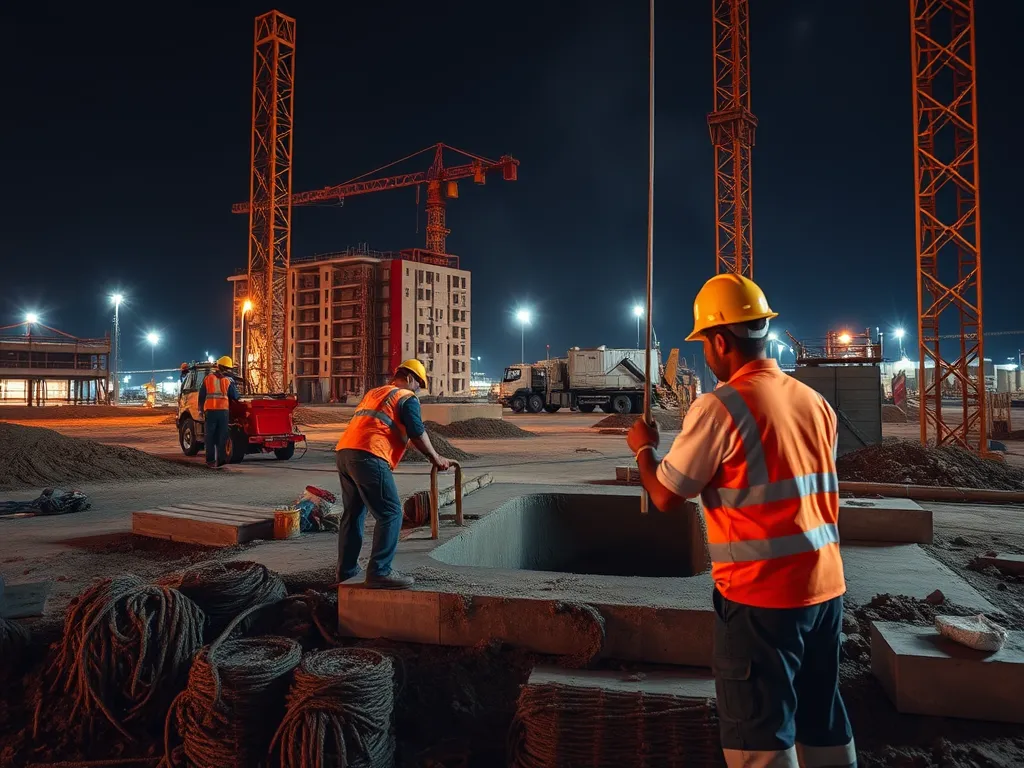
FAQs on Cooling Vs Curing in Asphalt
What is the Main Difference Between Cooling and Curing in Asphalt?
The primary difference is that cooling is a physical process where newly laid asphalt loses heat, while curing is a chemical process where the binder hardens and bonds with the aggregates. Cooling happens quickly, while curing can take several weeks or months.
Can Improper Cooling Affect the Curing Process?
Yes, improper cooling can negatively impact the curing process. If asphalt cools too quickly, it might lead to premature hardening but insufficient curing, which can result in cracks and reduced strength in the pavement.
How Do You Know When Asphalt is Cool Enough to Drive on?
Asphalt is generally cool enough to drive on when its surface temperature falls below 140°F. Typically, this can take anywhere from 2 to 4 hours depending on environmental conditions and the thickness of the layer.
What Role Does Humidity Play in the Cooling and Curing Processes?
Humidity affects both cooling and curing processes. High humidity can slow down evaporation, retaining more moisture that may prolong cooling time. For curing, too much moisture can lead to inadequate hardening and weak bonds between aggregates and the binder.
Are There Specific Products to Facilitate the Curing Process?
Yes, curing compounds, such as liquid membranes or curing agents, can help retain moisture and protect the surface during curing. These products prevent rapid evaporation and ensure that the binder cures properly.
What Are Some Common Mistakes Made During the Cooling and Curing Processes?
Common mistakes include improper layer thickness, inadequate compaction, and failing to monitor ambient conditions. These errors can lead to uneven cooling and curing, resulting in surface cracking, reduced adhesion, and overall pavement failure.
Closing Thoughts
Cooling and curing are critical processes in asphalt work. Understanding their differences is vital for ensuring the longevity and performance of asphalt surfaces. Curing focuses on chemical changes that enhance durability, while cooling manages temperature to prevent damage. Both processes must be optimized, taking into account environmental factors and application techniques.
Careful management of these processes can prevent issues like brittleness and surface cracks. Monitoring thermal gradients and maintaining proper temperatures can lead to better adhesion and overall quality. To maximize the longevity of your asphalt, pay close attention to both cooling and curing stages during installation.
For more insights and detailed information on asphalt projects, visit Asphalt Calculator USA.

